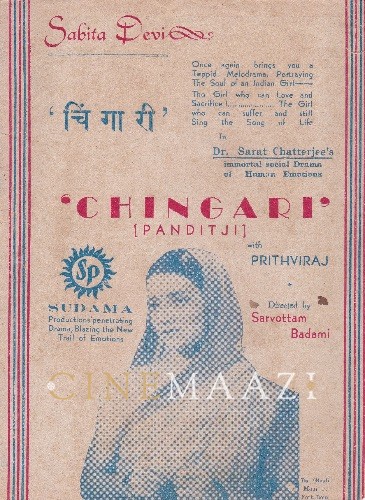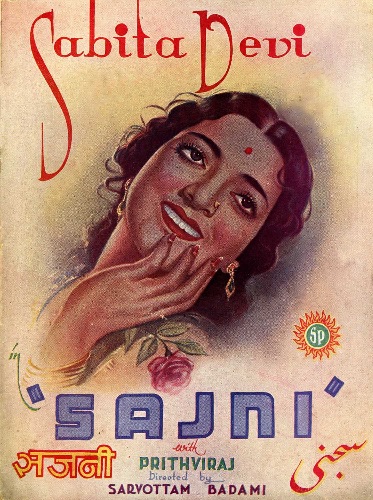Sarvottam Badami
Subscribe to read full article
This section is for paid subscribers only. Our subscription is only $37/- for one full year.
You get unlimited access to all paid section and features on the website with this subscription.
Not ready for a full subscription?
You can access this article for $2 , and have it saved to your account for one year.
- Born: 1910 (Channapatna, Karnataka)
- Died: 18 October, 2005 (Bengaluru, Karnataka)
- Primary Cinema: Hindi
- Spouse: Shanta Badami
An incredibly prolific director during the early years of the talkies, Sarvottam Badami left his mark in Hindi, Telugu and Tamil cinema. From working on the first Indian talkie, Alam Ara (1931) to playing a key role in setting up the Films Division post-Independence, his influence runs deep in the annals of Indian film history.
He was born the eldest of eleven children to a revenue officer in Channapatna, Karnataka. After finishing his studies, he shifted to Bangalore where he worked as a mechanic in a garage owned by Ambalal Patel. He later got a job as a projectionist at Select Pictures, also owned by Patel. Patel was soon setting up Sagar Film with Ardeshir Irani and Chimanlal Desai and Badami, his interest in cinema piqued, joined him in Bombay. He worked in the sound recording unit for one of Indian cinema’s landmark films – the first talkie Alam Ara (1931).
Opportunity soon came knocking when a German director left Sagar Film’s Harishchandra (1932) unfinished, allowing Badami to step in as director. He also made another film – the Tamil language Galava Rishi in the same year. He was the only South Indian in the studio, which led to him directing the Telugu films Rama Paduka Pattabhishekham (1932) and Shakuntala (1932). He continued making films for Sagar including Dr Madhurika (1935), Vengeance is Mine (1935), Grama Kanya (1936), Kokila (1937), Kulavadhu (1937), 300 Days and After (1938), and Aap Ki Marzi (1939). Among these Dr Madhurika and Vengeance is Mine were scripted byK M Munshi. He moved to Sudama Pictures with Patel in 1939. Continued to make films, mainly socials and comedies like Chingari (1940), Holiday in Bombay (1941), Khilona (1942), Bhagya Lakshmi (1944), Uttara Abhimanyu (1946) and Manmani (1947). He worked at Famous Cine Laboratory between 1946 and 1948.
The next important step in his career came when at Vallabbhai Patel’s request, he became Chief Producer at the fledgeling Films Division, helping set up the newsreel and documentary divisions. He made several documentaries including one on Vinoba Bhave (1951). After spending four years at Films Division, he retired from cinema and returned to Bengaluru, satisfied to spend the rest of his life with his family. Never taken in by the glamour of the industry, he led a simple life, usually doing consultancy work for the government of Karnataka.
The veteran filmmaker passed away on October 18, 2005. He was 95 years of age.
-
Filmography (21)
SortRole
-
Manmani 1947
-

Bhagya Laxmi 1944
-

Prarthana 1943
-

Khilauna 1942
-

Holiday In Bombay 1941
-
Sajani 1940
-

Chingari 1940
-

Sajni 1940
-
Ladies Only 1939
-
Jhul Badn 1938
-
Kulvadhu 1937
-










.jpg)



